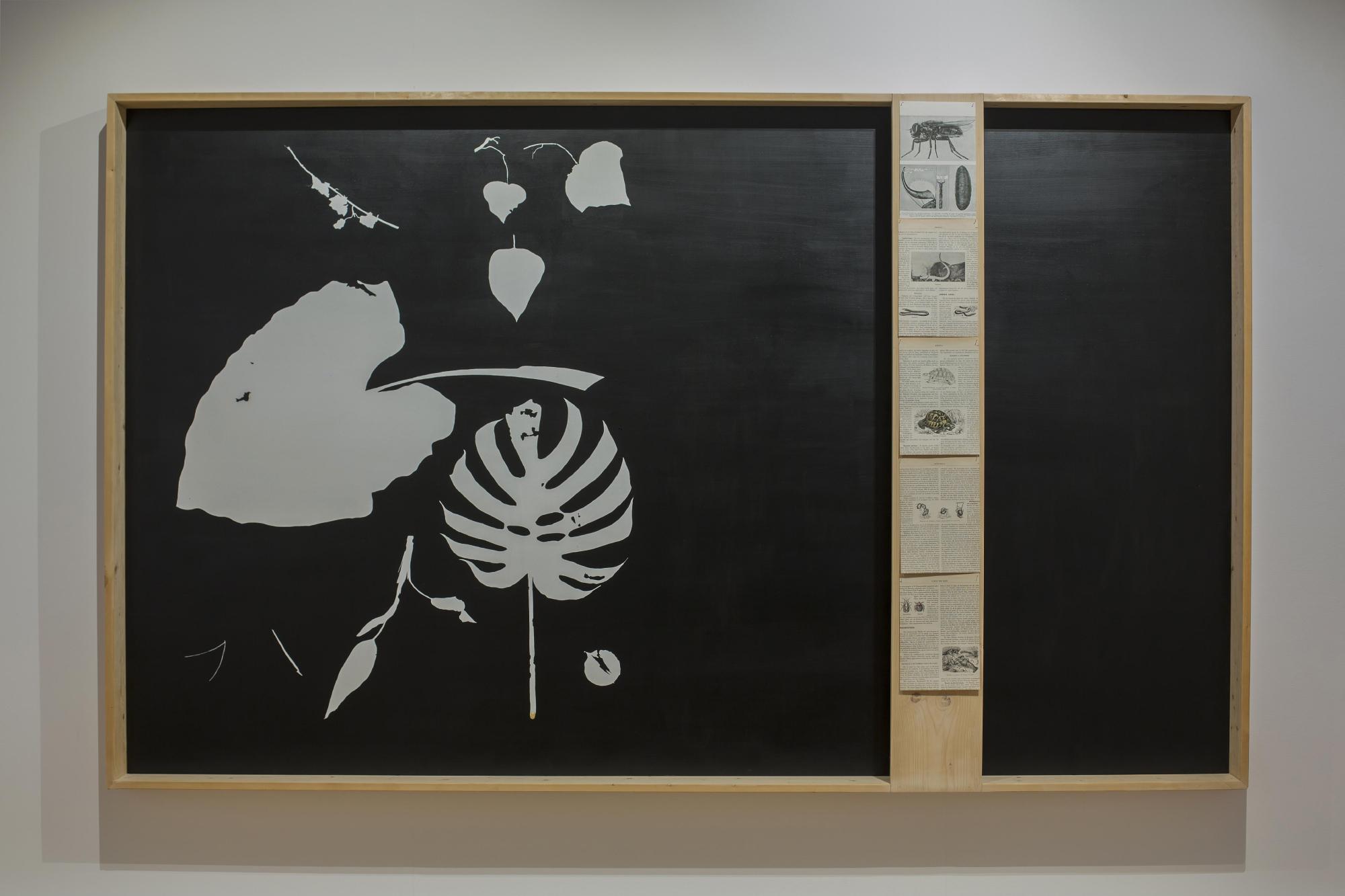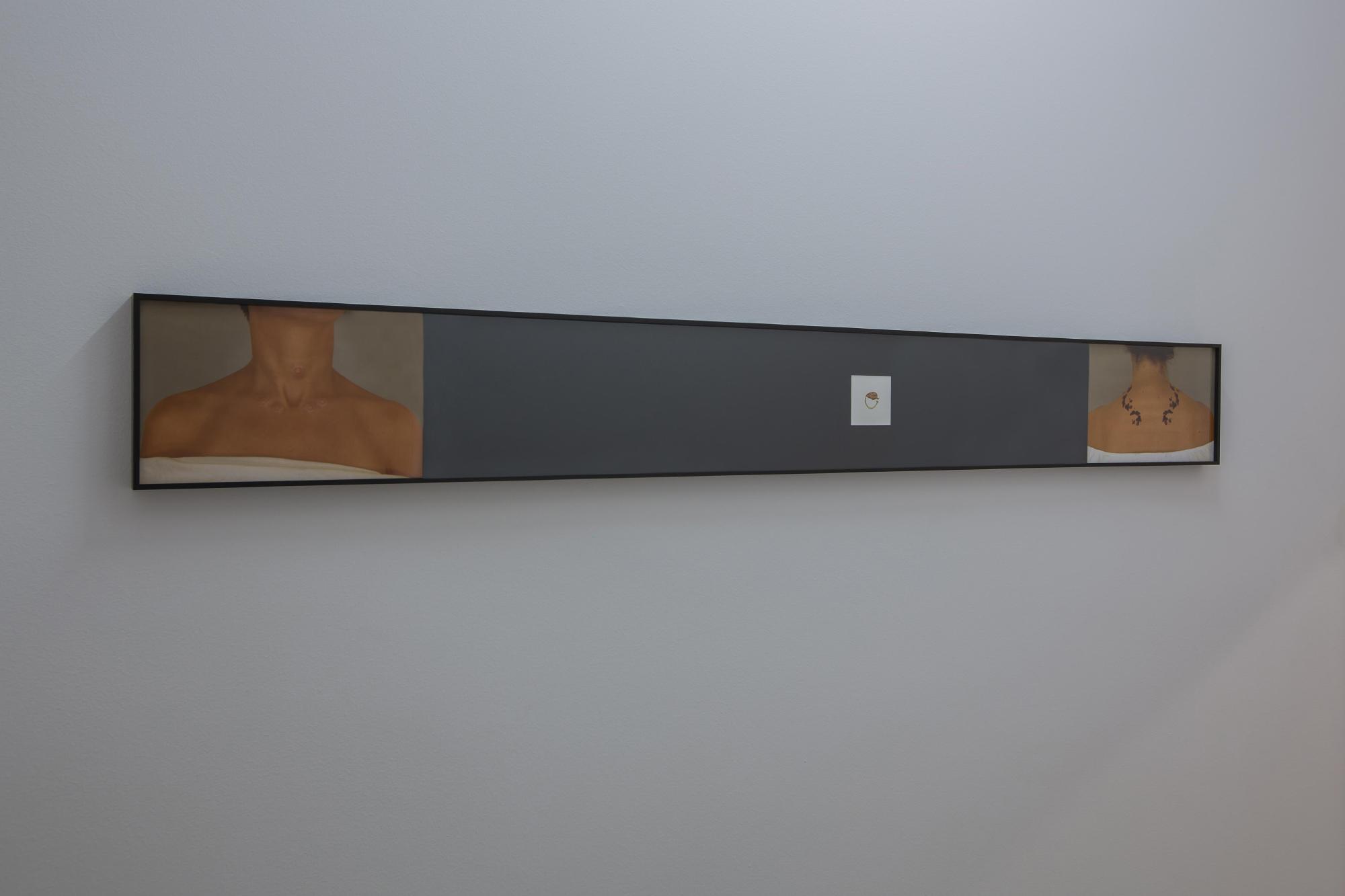30 May - 30 September, 2021
Apostolos Karastergiou / On The Status Of Species
In Marianne North’s Garden, oil on canvas, watercolor on old book pages, pinewood
Untitled (Additive), oil on dried flower, pinewood
Un Objet Trouvé dans un Objet Acheté, bird’s nest, wasps’ nest, pinewood
In Collaboration with Nature, color photos, watercolor
We Come in Peace, oil on canvas, ink and marker on paper
Salepi, enamel paint, cut-out zinc, color photos manually processed
Pray Prey, parchment made of goatskin, watercolor, ink
No sooner had the gates opened following the first Covid-19 pandemic lockdown than the crowds swarmed outside in search of entertainment, sensation and self-verification to then immediately share their experiences on social media. The angry reactions provoked by public health measures that call upon our civil responsibility attest to our increased impatience, restlessness and the fear of missing out.
In spring 2020, earth took a deep breath as cities fell silent and nature timidly resurfaced, regaining some space. It was the perfect moment to reflect on the status of humanity and other species. Driven by childhood memories, impressed by encounters in nature, and fueled by journeys throughout the country, this has been the lifelong artistic quest of Apostolos Karastergiou. His art works testify to a fascination with historical botanical illustrators such as Marianne North, written accounts of explorers and old illustrated nature encyclopedia. The artist ventures out, camera obscura in hand, to capture a rare flower, the details of a leaf, the outlines of a tree or the shape of a mountain. His mind travels both far and close to home. Equally excited by the curiosities brought back by explorers, by strange objects found on flea markets such as the bird’s nest, the many chemical household products with dubious references to nature or the small overlooked creatures in one’s own backyard, Karastergiou’s main concern has been with the appropriation of nature by humans. Throughout his oeuvre he has often made melancholic statements on the effects of travel, tourism and cultivation on the natural habitat. He investigates ambivalent natural history museum collections, the consequences of exploration, colonization, and other. More recently, they tend toward the perception of loss, of absence, species on the verge of extinction, the loss of authenticity, of territory, the withering of a flower, history buried in archives, knowledge enclosed in books, the absence of human life.
Karastergiou constructs narratives that blend reality and fiction. His drawings, watercolors, photographs and collages use humor to conceal the underlying worry about our ignorance and our lack of awareness, and the nostalgia for natural and human elements irretrievably lost. This most recent selection of works on display are a case in point: skin diseases draped around the wearer’s neck as a necklace, the pompousness of an ordinary pigeon, the caricature of a head smashed by a dove, the homophones Pray Prey printed on goat’s skin with two hoofs clasped together in prayer, and the revival of a wilted and dried strelitzia. The artist’s interest in design is apparent in the pistacchio ring and the carefully modeled wooden wall-bases that accompany the sculptural objects. He plays with our fears, our fears of nature symbolized by the dove which we hope comes in peace, and our fear of life outside our small, underappreciated but familiar world. And he stresses the beauty, importance and richness of our immediate environment in his display of color photos taken during his trip through the Valia Kalda, a stunning ecocenter located in northwestern Greece, in search of the wild orchid (Sernikovotano), the tubers from which form the basis for the smoothing hot drink, salepi.
The works are full of puns that challenge our immediate perception. They represent the simple, everyday, overlooked and economical elevated to the status of relic. They urge us to look around us, find value and take pleasure in the small and the ordinary and to abandon our constant search for excitement that dulls the senses and kills creativity.
Karastergiou’s tone is never belittling or reproaching, desperate or angry. His message is subtle, patient and compassionate. It is a modest effort in a world full of noise and special effects and devoid of space.
Els Hanappe, March 2021



